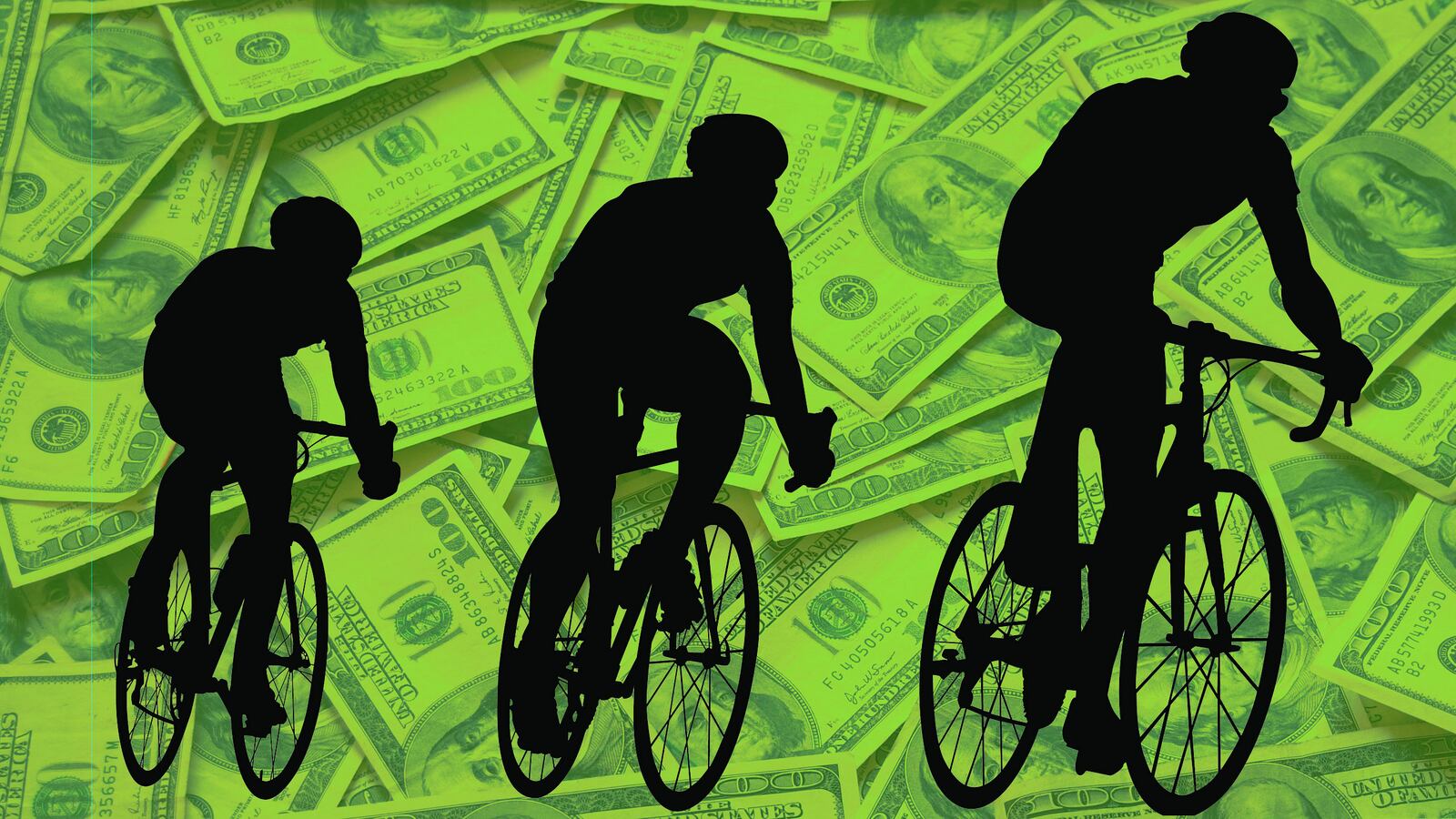Near a subway station in my neighborhood, ads for new luxury condos are popping up where abandoned buildings used to be. In the ads, a man leans casually against his bicycle outside of his sleek new apartment. Here, the bicycle becomes a short hand for a well-appointed life, complete with a separate entrance and covered bike parking. The ad sells an aspiration to urban simplicity: hip, carefree, and luxurious. Predictably, the guy standing next to the bicycle is white.
Down the road from those new condos, farther away from the subway stop, a well-used bicycle is chained to the bus sign. The bike looks almost abandoned, but it’s a critical and nearly hidden link in a transit chain. Bicycles often fill in the gap between public transit and getting home. For those who cannot afford a car or who are forced farther and farther out from transportation hubs, bicycles play the role of “last-leg” transit option. Here, a bicycle is not a sign of luxury, but of necessity.
Depending on where you live, where and when you ride, and the color of your skin, riding a bicycle can send a very different message.
There’s a curious polarization to perceptions of cyclists in America: either you’re wealthy enough to participate in cycling as a leisure activity by choice, or you’re poor enough to have no other option but to bike. Precisely because transit by bike does not require a license, people make all sorts of assumptions about cyclists: either you’ve lost your license to a drunk driving conviction, or if you’re not white, that you are undocumented. Rarely do people think of cyclists riding out of necessity.
I’ve seen this perception gap from my years on the road as a daily bike commuter. I began to bike out of my own economic necessity during the height of the recession with a first job in the church, student debt, and a broken-down car I couldn’t afford to fix. Sure, some ride because it’s trendy. Others bike because of environmental commitments to live more sustainably. I began because I couldn’t afford other options. Seven years later, I continue to ride regularly because it’s efficient for getting around a city, a pleasant way to add in an hour of cardio each day, and a genuinely joyful commute rather than the angst of car traffic or undependability of public transit.
As I pulled alongside a car in the left turn lane recently, unprovoked a driver shouted at me, “Kiss my ass, Lance.” Somehow, he didn’t seem interested in knowing that my name is Laura, not Lance. But the motorist’s insult was telling—lumping all cyclists together, as if a clergywoman toddling along on her bike at 12 mph hauling groceries had anything to do with the world’s most recognizable and disgraced cyclist Lance Armstrong. From where I sat, my bicycle has almost nothing to do with bicycles that cost more than my first car.
Despite these perceptions, most cyclists are not riding fancy carbon bikes. The 2014 U.S. Census Bureau American Community Survey data confirms: “most cyclists are poor.”
When visiting the outstanding Tour de Hood in Houston, I asked founder Dr. Veon McReynolds if the popular perception of a cyclist as a spandex-clad “roadie” was a stumbling block to children of color in his neighborhood learning to ride. “My kids don’t know or care who Lance is,” he responded. “We ride because it works.”
And yet, this perception gap remains. Maybe it’s because of those luxury condo ads in my neighborhood. Or maybe because of cycling’s patrician past: At the turn of the previous century, gentlemen and then ladies cycled about for touring adventure. In the beginning, cycling was recreation, not utility. And before mass production, cycling was the leisure activity of the wealthy, not the necessity of the masses. These perceptions have real-life infrastructure consequences. When public officials perceive of a bicycle as recreational rather than practical, we focus on remote recreation trails for weekend leisure rather than central bike lanes for daily commuting.
But now, we are at a unique moment in bicycle history. Some social commentators say that we’re entering the third great era of bicycles, after the initial boom in the early 1900’s and then the ’70s peak oil bicycle push. This time, the bicycle is more of a utility than a source of leisure. Since 2000, “bike commuting has grown 61 percent.”
Still, we struggle to name what’s going on. For a moment, some transit justice activists, including me, found the term “invisible cyclists” helpful to name those riders who don’t fit the luxury cyclist image. More recently, the term has been dropped because the obligation to see falls not on the cyclist, but the viewer. If I learn to notice, I can see cyclists who don’t fit the young, rich, white, documented, and male stereotype. I can see folks obliged to ride late at night after the public transit stops. If I learn to look, I can see folks who ride because they don’t have a license. If I stop to notice, I’ll recognize cyclists who ride because it’s cheap transit in an expensive city. If we learn to see everyone who rides at all times and for all reasons, maybe we can also learn to design more just roads and more equitable transit.
The category of “cyclist” can expand, if we let it. If I’m entirely honest, I ride not only because it’s practical and joyful and cheap; I ride as an act of defiance. I ride so more women will also ride. I put my body in a place that wasn’t designed for me in order that more bodies can find space to ride practically, economically, and joyfully, too.
Laura Everett is a minister in the United Church of Christ and executive director of the Massachusetts Council of Churches. Her book HOLY SPOKES: The Search for Urban Spirituality on Two Wheels is out now.






